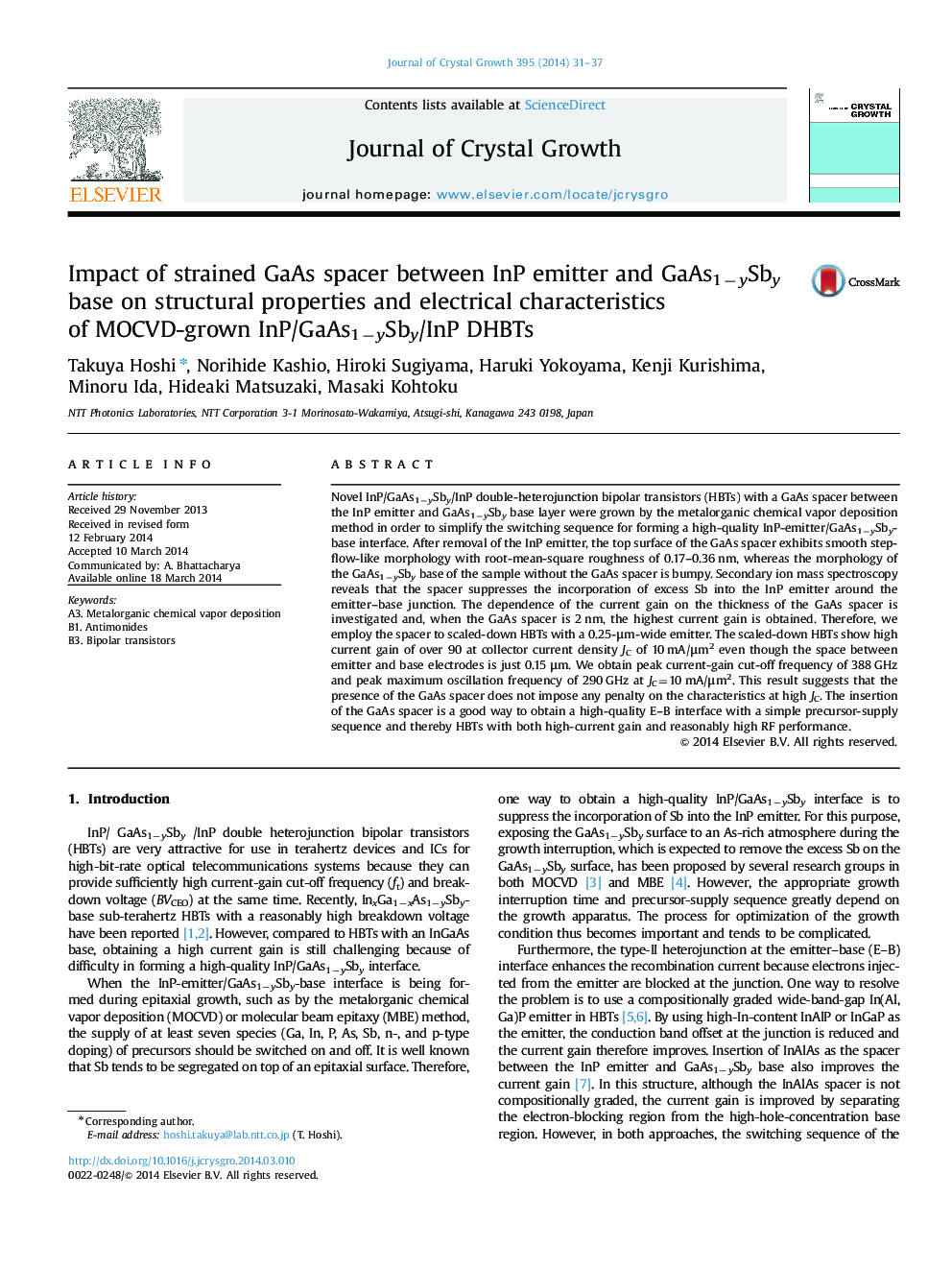| کد مقاله | کد نشریه | سال انتشار | مقاله انگلیسی | نسخه تمام متن |
|---|---|---|---|---|
| 1790543 | 1524434 | 2014 | 7 صفحه PDF | دانلود رایگان |

• We demonstrated novel InP/GaAsSb HBTs with a GaAs spacer between the InP emitter and GaAsSb base.
• We obtained an abrupt E–B interface by inserting the GaAs spacer.
• DC current gain increased with increasing thickness of the GaAs spacer when the spacer was 2-nm-thick or less.
• The 0.25-μm-emitter HBTs with the 2-nm GaAs spacer exhibited β, peak ft, and peak fmax at JC=10 mA/μm2 of over 90, 388 GHz, and 290 GHz, respectively.
Novel InP/GaAs1−ySby/InP double-heterojunction bipolar transistors (HBTs) with a GaAs spacer between the InP emitter and GaAs1−ySby base layer were grown by the metalorganic chemical vapor deposition method in order to simplify the switching sequence for forming a high-quality InP-emitter/GaAs1−ySby-base interface. After removal of the InP emitter, the top surface of the GaAs spacer exhibits smooth step-flow-like morphology with root-mean-square roughness of 0.17–0.36 nm, whereas the morphology of the GaAs1−ySby base of the sample without the GaAs spacer is bumpy. Secondary ion mass spectroscopy reveals that the spacer suppresses the incorporation of excess Sb into the InP emitter around the emitter–base junction. The dependence of the current gain on the thickness of the GaAs spacer is investigated and, when the GaAs spacer is 2 nm, the highest current gain is obtained. Therefore, we employ the spacer to scaled-down HBTs with a 0.25-μm-wide emitter. The scaled-down HBTs show high current gain of over 90 at collector current density JC of 10 mA/μm2 even though the space between emitter and base electrodes is just 0.15 μm. We obtain peak current-gain cut-off frequency of 388 GHz and peak maximum oscillation frequency of 290 GHz at JC=10 mA/μm2. This result suggests that the presence of the GaAs spacer does not impose any penalty on the characteristics at high JC. The insertion of the GaAs spacer is a good way to obtain a high-quality E–B interface with a simple precursor-supply sequence and thereby HBTs with both high-current gain and reasonably high RF performance.
Journal: Journal of Crystal Growth - Volume 395, 1 June 2014, Pages 31–37